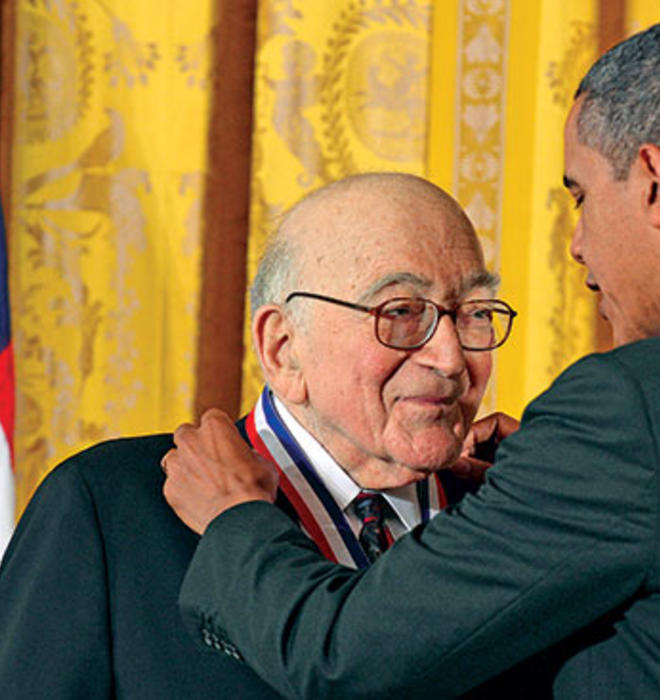
SEPT. 13, 1926 | DEC. 21, 2016
ALUMNI WHO ENJOYED — or abhorred — writing a thesis before they could graduate might have Sidney Drell ’47 to thank, in part, for the experience. In 1991, Drell, a theoretical physicist and nuclear-security expert; and George P. Shultz ’42, a former secretary of state, wrote to the Princeton Alumni Weekly arguing against a proposal to get rid of the thesis requirement, calling the thesis “far and away the most important component of [their] Princeton education.” The requirement stayed.
Writing a thesis convinced Drell, who was admitted to Princeton at 16, to become a research physicist. He went on to receive a doctorate from the University of Illinois at Urbana-Champaign and to teach at MIT and Stanford University, where he remained until his death. Drell’s many contributions to his field included the iconic Drell-Yan process, which explained how high-energy quark-antiquark collisions could produce certain pairs of particles and provided key background for particle-physics work performed at facilities such as the Large Hadron Collider. Drell was also instrumental in establishing and advancing the SLAC National Accelerator Laboratory at Stanford.
While physics “came first,” according to Drell’s daughter, Stanford provost Persis Drell, her father was deeply committed to national-security policy and arms control for much of his career.
“Every major piece of arms-control legislation of the last 50 years has his fingerprints on it somewhere,” Persis says. Sidney Drell was one of the founding members of JASON, a group of advisers to the government on science and technology issues, and co-founded with Shultz a program at Stanford’s Hoover Institution focused on achieving a world free of nuclear weapons. In his politically charged policy work, Drell was respected by people across the political spectrum for being an “honest broker,” according to Raymond Jeanloz, a professor of Earth and planetary science at the University of California, Berkeley.
Drell also taught and mentored others, encouraging them to blend their technical expertise with policy contributions. Jeanloz, who met Drell as a mid-career academic, says Drell’s guidance made him feel like he was “becoming a student and doing a Ph.D. thesis all over again.” Lance Dixon, a Stanford professor of particle physics and astrophysics, says that Drell’s openness and keen interest in each lab member’s research contributed to his desire to remain at Stanford for the last 30 years.
Though Drell was thrilled when Persis became a physicist, he did not impose his own aspirations on his three children, his daughter says. As a child, Persis would sit in a corner of her family’s living room and listen in on her father’s conversations with giants of physics and nuclear policy, such as Nobel laureates Richard Feynman *42 and Isidor Isaac Rabi.
“We were always part of the conversation if we wanted to be,” she says.
Tara Thean is a research associate at the Lee Kuan Yew School of Public Policy.
VIDEO Sidney D. Drell ’47
Courtesy National Science & Technology Medals Foundation






No responses yet